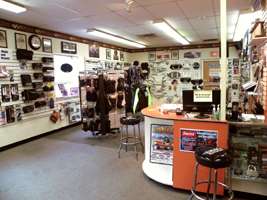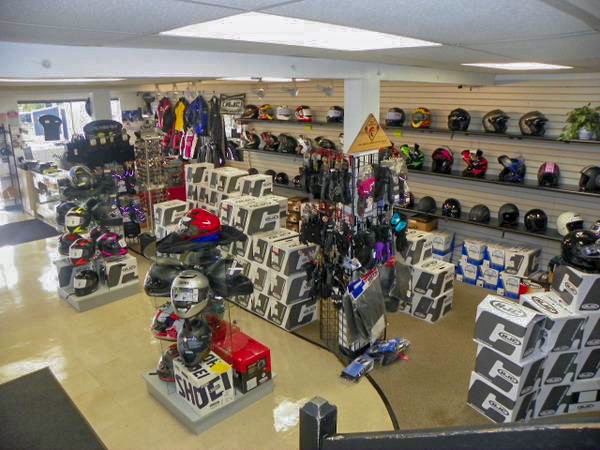Release Performance with Premium Motox Parts NZ Available Here
Release Performance with Premium Motox Parts NZ Available Here
Blog Article
Understanding the Important Parts of a Motorbike: A Comprehensive Overview for Lovers
For motorbike enthusiasts looking to boost their riding experience and guarantee their bikes run smoothly, understanding the essential parts of a motorbike is critical. Each element, from the engine's detailed functions to the essential duty of the braking devices, not only affects efficiency however also safety and security and comfort.
Engine Components

The camshaft plays an important duty in controlling the timing of the engine's valves, making certain the precise opening and closing required for reliable gas and air intake, in addition to exhaust expulsion. This timing is important to maintaining optimal engine performance and efficiency. Additionally, the carburetor or fuel injection system, depending upon the motorbike design, is in charge of mixing air with gas in the appropriate ratio for burning.
The cooling system, either air or liquid-based, functions to keep the engine's temperature within operational limits, avoiding overheating and guaranteeing durability - motox parts nz. Each part, meticulously made and incorporated, adds to the seamless operation of the engine, defining the bike's power result and general performance
Transmission System
Essential to the motorcycle's capability, the transmission system makes certain effective power transfer from the engine to the wheels. This system makes up several critical parts, including the clutch, gearbox, and last drive, each playing an essential duty in equating the engine's power into motion. The clutch, usually operated by a hand bar, offers to engage and disengage the engine from the transmission, permitting smooth gear modifications and regulated acceleration.
The gearbox, usually referred to as the transmission proper, includes a set of gears that cyclists can by hand shift via to change the bike's rate and torque outcome. These equipments are set up in a sequence that allows the motorbike to accelerate smoothly and keep optimum engine efficiency throughout different rates. A lot of motorcycles use a consecutive gearbox, calling for the motorcyclist to shift gears in a predetermined order.
Braking Systems
While understanding the transmission system is crucial to utilizing a bike's power, equally vital is the ability to regulate and stop that power effectively, which is where braking devices enter into play. Brakes are essential for safety and security and performance, giving the biker with the essential control to navigate different terrains and conditions. Typically, motorbikes include two types of stopping systems: disc brakes and drum brakes.
Disc brakes are a lot more widespread in contemporary motorbikes as a result of their exceptional performance. They contain a brake disc, caliper, and pads. When turned on, the caliper presses the brake pads against the spinning disc, converting kinetic energy into warm, therefore slowing check this the wheel. This system offers better heat dissipation, regular performance, and enhanced stopping power, particularly in wet conditions.
On the other hand, drum brakes, though much less typical, are still discovered in some bikes. They function by pushing brake footwear against the inner surface of a drum attached to the wheel. While generally much less reliable in warm dissipation and stopping power, drum brakes are simpler and much more economical.
Recognizing these stopping systems' nuances allows cyclists to keep their motorbikes correctly and appreciate the design that makes certain secure and reliable quiting.
Suspension and Guiding
Suspension and guiding systems are essential components that considerably influence a motorbike's handling and experience convenience. The shock absorber, being composed of forks at the front and shock absorbers at the back, takes in roadway abnormalities, improving stability and control. Front forks, inverted or usually telescopic, compress and rebound to reduce impacts, while back shock absorbers preserve tire call with the road, crucial for grip and safety and security.
Guiding, focused around the handlebars, attaches the rider to the motorcycle's directional control. The steering head bearings make certain smooth procedure, enabling precise ability to move. Proper placement and maintenance of these bearings are crucial for foreseeable steering action and reducing motorcyclist exhaustion.
The suspension's adjustability is one more essential element; preload, damping, and rebound setups enable customization to match different riding conditions and styles. This flexibility is crucial for optimizing performance, whether browsing metropolitan streets or taking on rugged routes. Advancements like digital suspension systems use real-time changes, improving ride quality throughout diverse terrains.

Electrical Equipments
After ensuring a regulated and smooth experience via efficient suspension and steering systems, interest transforms to the electric systems, a crucial facet of modern-day motorcycles. These systems play an important function not just in beginning the engine yet additionally in powering numerous elements that improve the capability and safety and security of the motorbike.
At the heart of a bike's electric system is the battery, which stores electric power required for beginning the engine and powering auxiliary systems - motocross gear. The generator or generator, paired with the rectifier-regulator, makes sure the battery stays billed while the motorbike functions, converting mechanical energy into electrical energy and maintaining voltage levels
The ignition system, an additional essential element, is accountable for sparking the air-fuel mixture in the engine's cyndrical tubes. Modern bikes commonly use an electronic ignition system, offering better efficiency and reliability contrasted to traditional systems.
Lighting systems, consisting of fronts lights, tail lights, and indicators, are additionally essential, making sure exposure and safety for the cyclist. Added electronic components such as sensing units, control devices, and shows contribute to advanced features like fuel injection monitoring, anti-lock braking systems (ABS), and electronic dashboards, further boosting the riding experience.
Verdict
A detailed comprehension of a motorbike's essential elements, consisting of the engine, transmission system, braking devices, suspension, guiding, and electrical systems, is vital for enthusiasts aiming to maximize efficiency, convenience, and safety. Proficiency of these elements permits notified choices regarding upkeep and upgrades, ultimately enhancing the riding experience. By incorporating this knowledge, cyclists can guarantee their bikes operate at peak efficiency and dependability, consequently making the most of both pleasure and durability of their automobiles.
For bike fanatics looking to boost their riding experience and guarantee their bikes run efficiently, understanding the necessary parts of a bike is extremely important.Indispensable to motorcycle rain gear the bike's functionality, the transmission system ensures efficient power Visit Your URL transfer from the engine to the wheels.While understanding the transmission system is essential to taking advantage of a bike's power, just as important is the ability to manage and stop that power effectively, which is where braking mechanisms come into play. Normally, bikes include 2 types of braking systems: disc brakes and drum brakes.
A comprehensive comprehension of a bike's necessary parts, consisting of the engine, transmission system, stopping mechanisms, suspension, guiding, and electrical systems, is important for fanatics intending to enhance safety and security, convenience, and performance.
Report this page